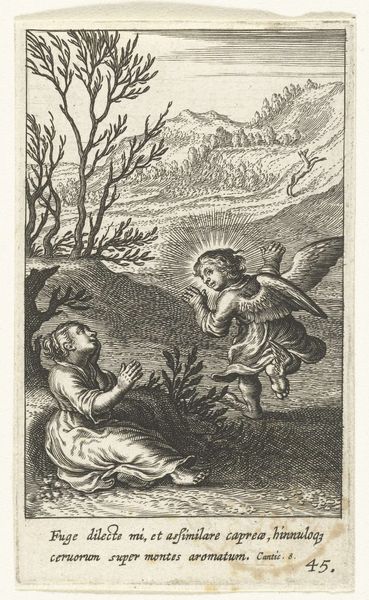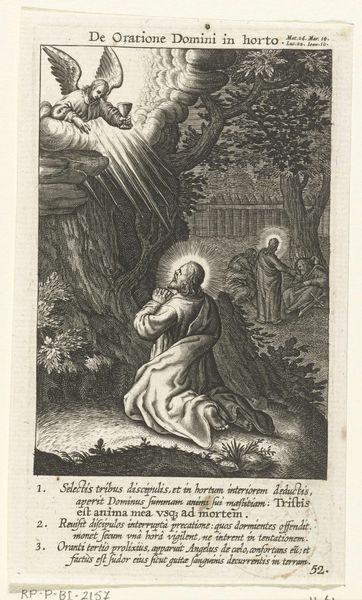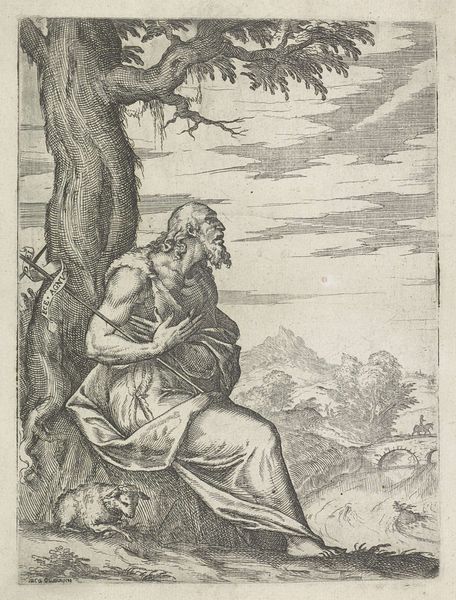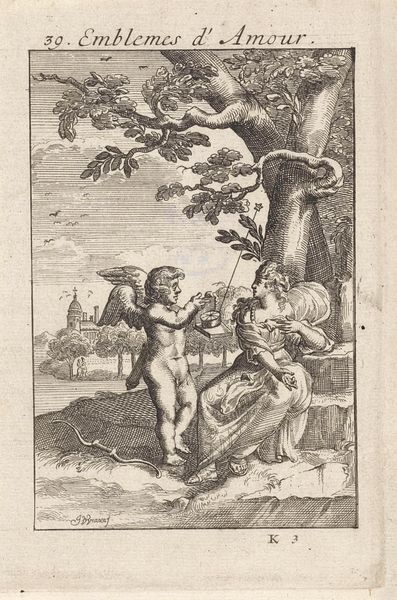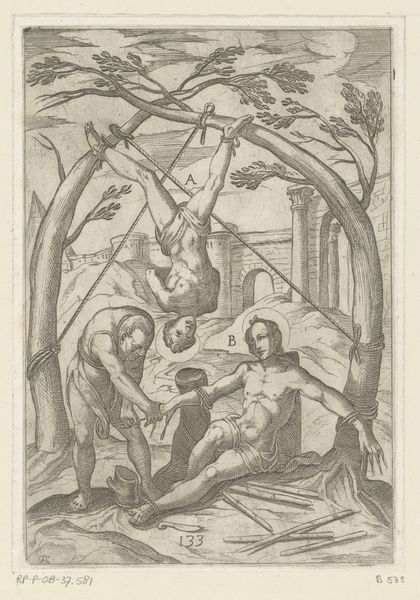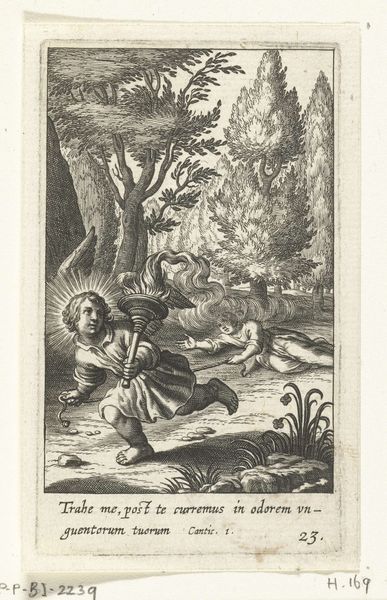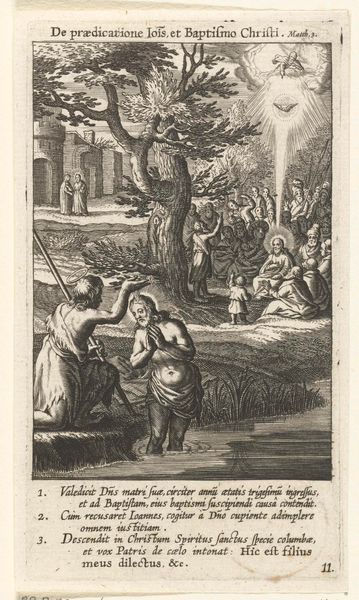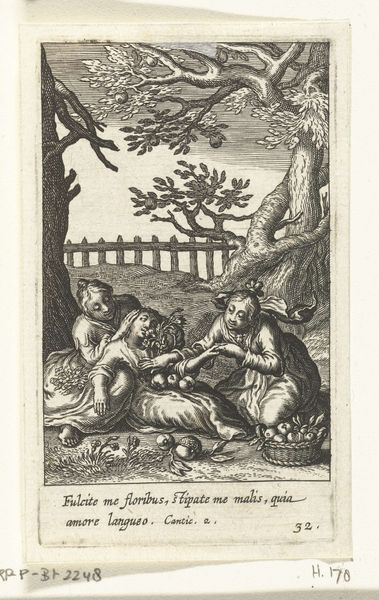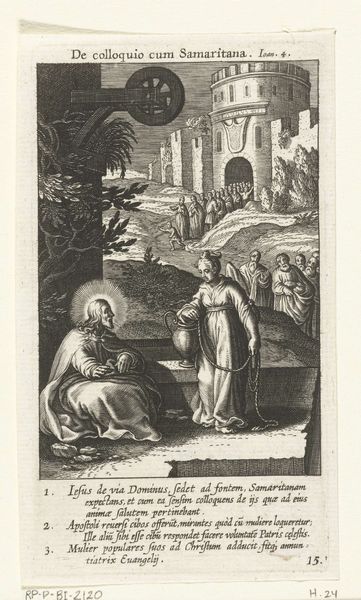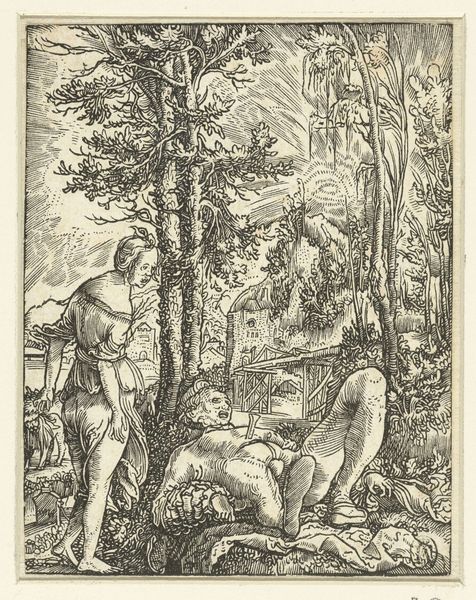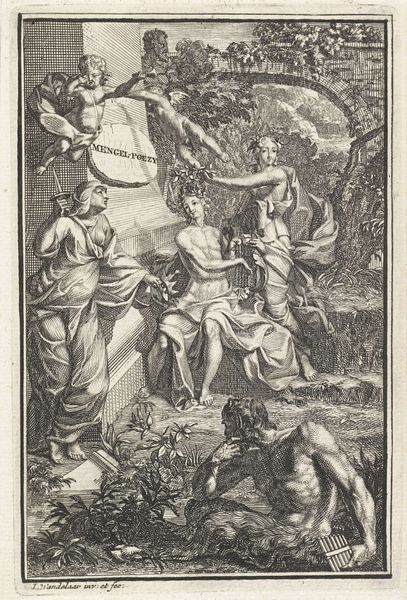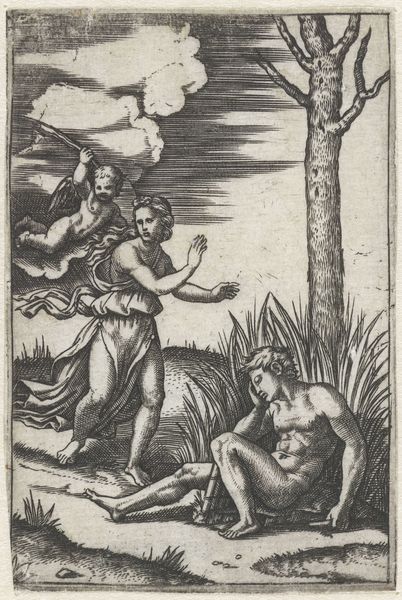
Kind zit in schaduw bij aan boom gekruisigde engel 1590 - 1624
0:00
0:00
boetiusadamszbolswert
Rijksmuseum
print, engraving
#
allegory
# print
#
old engraving style
#
landscape
#
figuration
#
northern-renaissance
#
engraving
Dimensions: height 94 mm, width 56 mm
Copyright: Rijks Museum: Open Domain
Curator: This engraving, whose title translates to "Child sitting in shadow by a tree, crucified angel", was created between 1590 and 1624 by Boëtius Adamsz. Bolswert. It’s currently held in the Rijksmuseum. What are your first impressions? Editor: Stark. The high contrast gives it an almost brutal feel, and that angel nailed to the tree is frankly disturbing. The figure kneeling below is a compelling focal point, drawing me into some implied narrative. Curator: Absolutely. The engraving masterfully uses light and shadow to create this dramatic tension. Notice how the angel, while central, is literally pinned to the tree. What symbolism might the ‘crucified angel’ convey in relation to the kneeling child? Editor: That’s the compelling point! The image presents such a paradoxical allegory: salvation or suffering, innocence under threat? We might explore contemporary religious and social structures, the period's preoccupation with original sin, or perhaps Bolswert's views of the established church. The politics of imagery! Curator: Intriguing analysis. Focusing purely on its composition, I'd note the visual hierarchy. The lines of the tree and the angel's form lead directly to the child. This is supported by Bolswert's exquisite rendering of textures, distinguishing the rough bark from the soft folds of the child’s garment. Editor: Precisely, it raises further questions. Is this child seeking refuge or forgiveness? What are the politics embedded here between authority, represented by the angel nailed, and innocence, signified by the child. Curator: The context adds significant layers. This era saw profound social shifts. Considering Bolswert’s background would reveal further intentions regarding the role of religious authority at the time. Editor: Well, my initial unease has now deepened. It’s a credit to the piece’s power that it generates these unsettling but productive questions about representation and ideology. Curator: Agreed. This print displays a potent artistic dialogue between the sacred and the profane, visualized via formal elements and shaped through historical conditions.
Comments
No comments
Be the first to comment and join the conversation on the ultimate creative platform.
